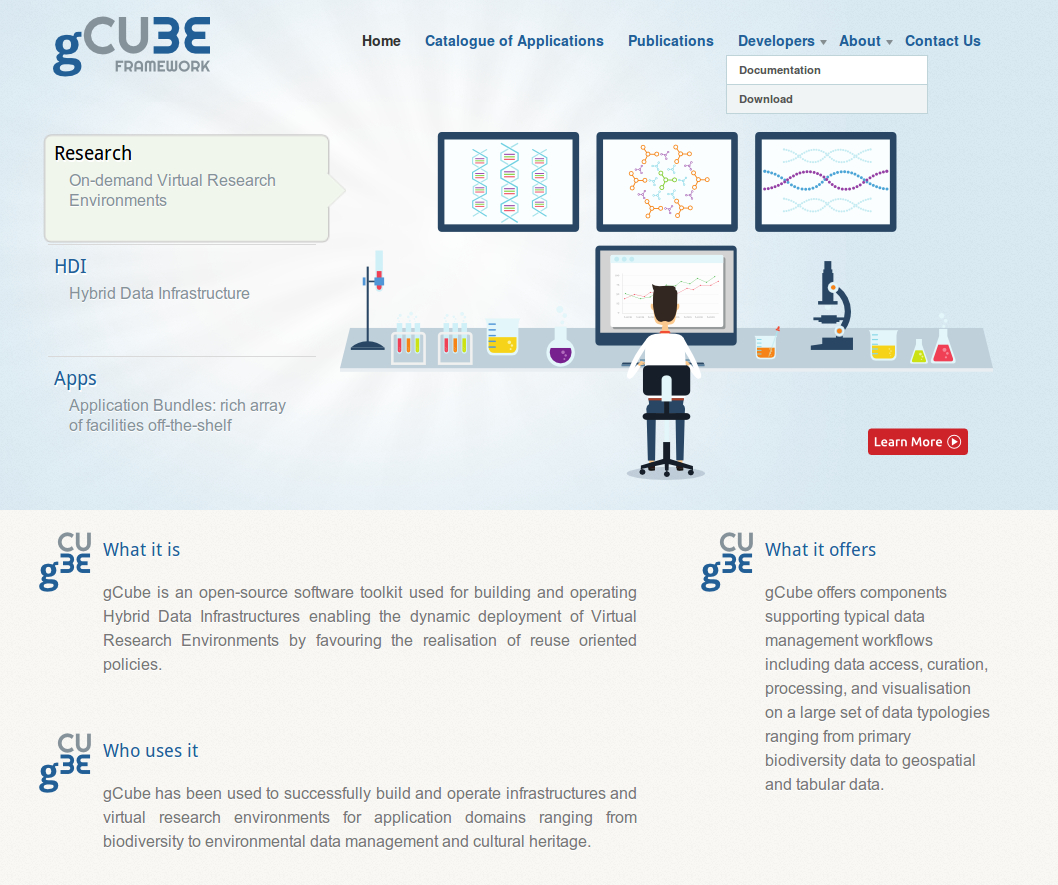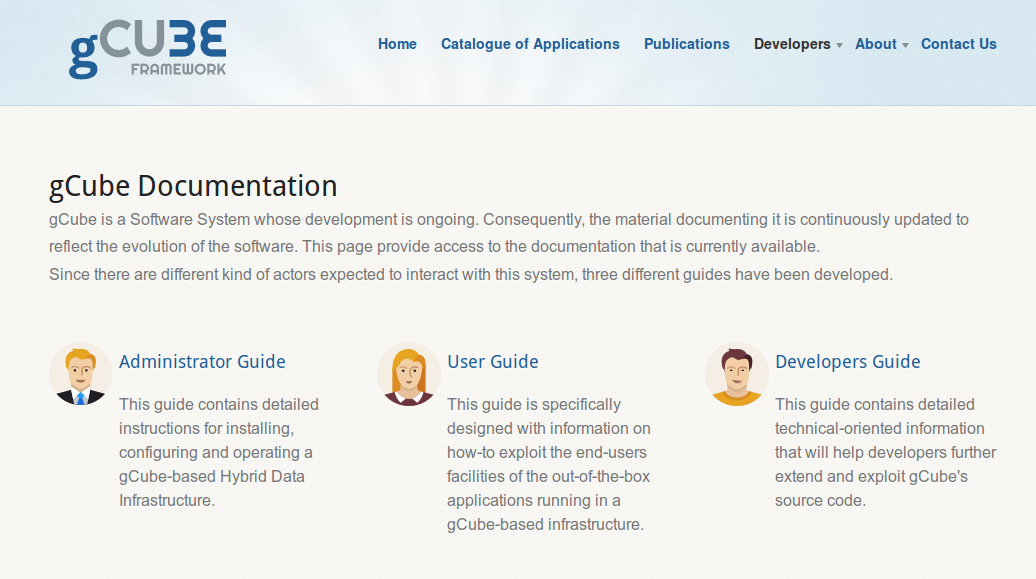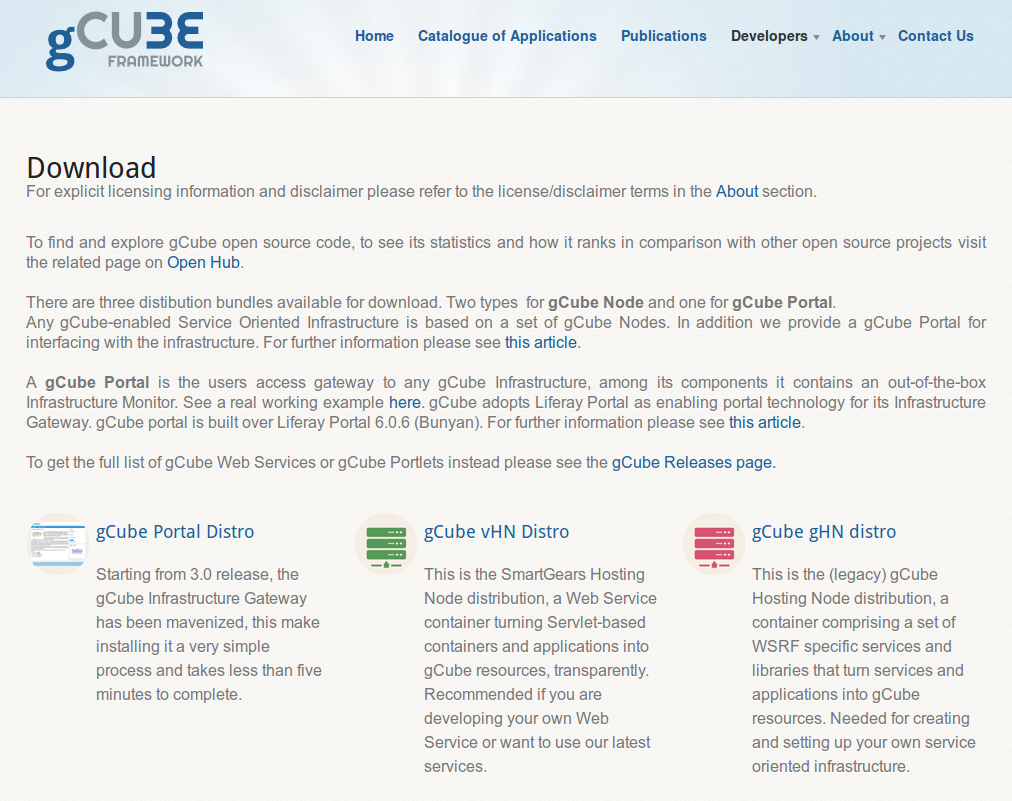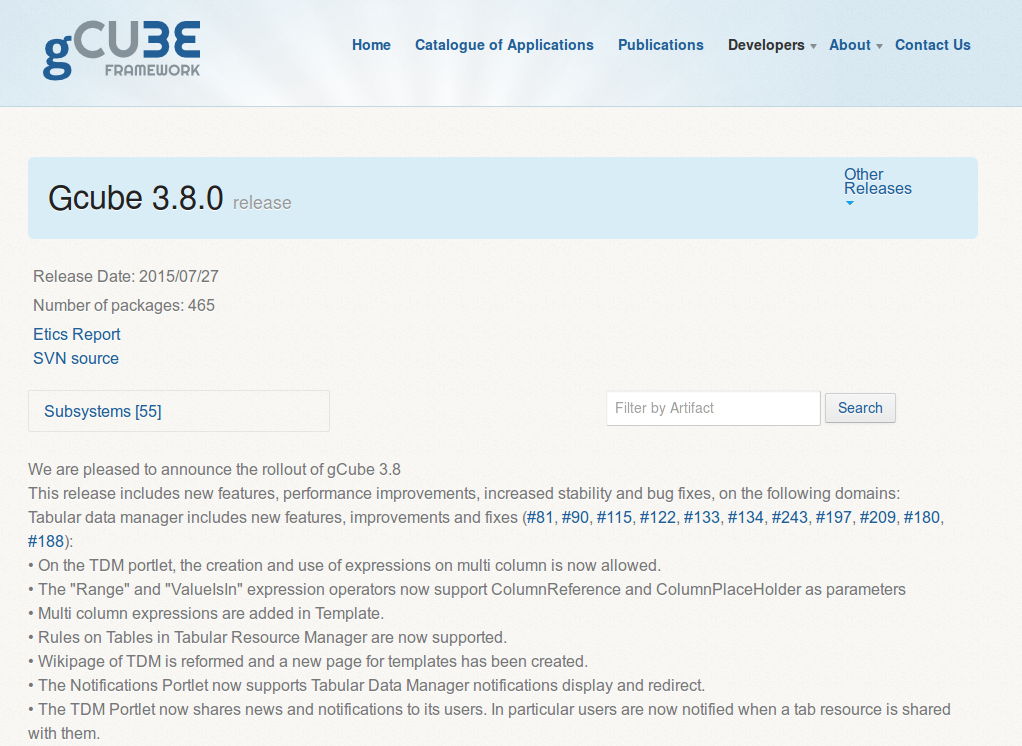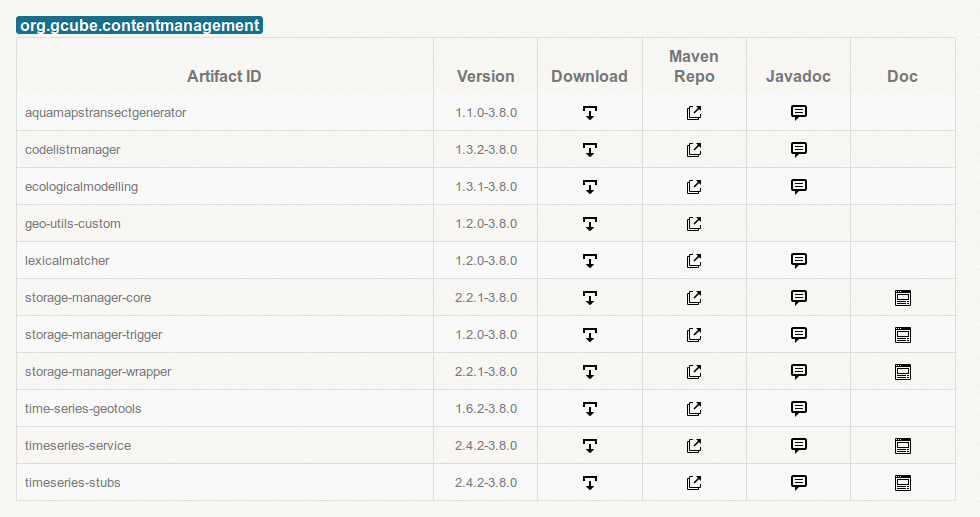Difference between revisions of "GCube Web Site and Distribution Site"
Luca.frosini (Talk | contribs) |
|||
| Line 1: | Line 1: | ||
| − | The gCube Website, found at [http://www.gcube-system.org/ http://www.gcube-system.org/] is a portal, based on Liferay, for distributing all information related to the gCube technology. | + | The gCube Website, found at [http://www.gcube-system.org/ http://www.gcube-system.org/] is a portal, based on Liferay, for distributing all information related to the gCube technology. |
| + | The gCube website offers the tools for the distribution of software and documentation produced by the Project. Two dedicated sections, named "Documentation" and "Downloads" (under Developer section) are available from the Website's menu bar. | ||
| + | The pages contain informations about the software and documentation which are distributed through the site. | ||
| + | [[File:Distr.jpeg|900px|center]] | ||
| − | + | ==Documentation== | |
| − | Clicking on the | + | Clicking on the link "Documentation", the user would move to the user would move to the gCube Software Distribution where three different guides are available: [https://wiki.gcube-system.org/gcube/Administrator%27s_Guide| Administrator Guide], [https://wiki.gcube-system.org/gcube/User%27s_Guide| User Guide] and [https://wiki.gcube-system.org/gcube/Developer%27s_Guide| Developers Guide]. |
| − | + | ||
| − | [[File: | + | [[File:gCube_System_Documentation.png|800px|center|thumb|gCube System Documentation]] |
| − | |||
| − | |||
| − | |||
| − | [[ | + | ==Downloads== |
| + | Clicking on the link "Downloads", the user would move to the gCube Software Documentation where three distibution bundles are available: [http://maven.research-infrastructures.eu/nexus/index.html#nexus-search;quick~portal-bundle| gCube Portal Distro], [http://maven.research-infrastructures.eu/nexus/index.html#nexus-search;quick~smartgears-distribution-bundle| gCube vHN Distro] and [http://maven.research-infrastructures.eu/nexus/index.html#nexus-search;quick~ghn-distribution| gCube gHN distro]. | ||
| − | + | The user to get the full list of gCube Web Services or gCube Portlets can see the [https://www.gcube-system.org/download| gCube Releases page]. | |
| − | The information presented in the gCube | + | |
| − | + | [[File:gCube_System_Download.png|800px|center|thumb|gCube System Downloads]] | |
| + | |||
| + | ===gCube Releases page=== | ||
| + | |||
| + | Clicking on the link "gCube Releases page", the user would move to the gCube Release Distribution where all gCube Web Services and gCube Portlets are available for download. | ||
| + | The page shows (by default) the latest gCube release and its related information: Release Date, Number of packages, Etics report, Number of Subsystems, Release Notes. | ||
| + | It's possible to filter for artifact (name). The previous releases are available by clicking on the link "Other Releases". | ||
| + | |||
| + | [[File:gCubeRelease_3_8.png|800px|center|thumb|gCube Release 3.8]] | ||
| + | |||
| + | |||
| + | Moreover, the page shows for each subsystem all its components (Artifact ID) and releative links: Download, Maven Repo, Javadoc and Wiki Documentation (where availables). | ||
| + | |||
| + | [[File:GCube_ContentManagement_Download_3_8.png|800px|center|thumb|gCube Content Management Subsystem and its components for gCube 3.8]] | ||
| + | |||
| + | |||
| + | The informations presented in the gCube Release page are retrieved automatically from distribution.xml and Release Notes files generated by ETICS Build Reports. In order to add a new Release for download from the gCube Website, the gCube Release Manager has to fill in a web form with the release information (name, release date, etc.), the Release Notes and the releative distibution.xml to add the new release. | ||
Revision as of 12:58, 29 September 2015
The gCube Website, found at http://www.gcube-system.org/ is a portal, based on Liferay, for distributing all information related to the gCube technology. The gCube website offers the tools for the distribution of software and documentation produced by the Project. Two dedicated sections, named "Documentation" and "Downloads" (under Developer section) are available from the Website's menu bar. The pages contain informations about the software and documentation which are distributed through the site.
Documentation
Clicking on the link "Documentation", the user would move to the user would move to the gCube Software Distribution where three different guides are available: Administrator Guide, User Guide and Developers Guide.
Downloads
Clicking on the link "Downloads", the user would move to the gCube Software Documentation where three distibution bundles are available: gCube Portal Distro, gCube vHN Distro and gCube gHN distro.
The user to get the full list of gCube Web Services or gCube Portlets can see the gCube Releases page.
gCube Releases page
Clicking on the link "gCube Releases page", the user would move to the gCube Release Distribution where all gCube Web Services and gCube Portlets are available for download. The page shows (by default) the latest gCube release and its related information: Release Date, Number of packages, Etics report, Number of Subsystems, Release Notes. It's possible to filter for artifact (name). The previous releases are available by clicking on the link "Other Releases".
Moreover, the page shows for each subsystem all its components (Artifact ID) and releative links: Download, Maven Repo, Javadoc and Wiki Documentation (where availables).
The informations presented in the gCube Release page are retrieved automatically from distribution.xml and Release Notes files generated by ETICS Build Reports. In order to add a new Release for download from the gCube Website, the gCube Release Manager has to fill in a web form with the release information (name, release date, etc.), the Release Notes and the releative distibution.xml to add the new release.
